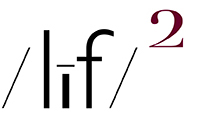WHILE SITTING AROUND–in air conditioned comfort-AND KILLING TIME at the Jersey Shore this week, I came across an entry on a photo site that discussed “how much is too much?” – the much in question was post picture making “editing”. I put editing in quotes cuz the author of the piece, according to my way of thinking, was actually writing about post picture making retouching, i.e., removing unwanted visual elements from an image file.
That procedure, undertaken in the pursuit of making a “perfect” picture, is, iMo, a petty, bourgeoisie pursuit that is the ultimate bane–i.e., cause of harm, ruin, and a source of persistent annoyance or exasperation–undertaken by “serious” amateur picture makers which pretty much eliminates the possibility of making a really good photograph.
My rational for such a belief derives from the fact that I am a devoted practitioner of “straight” photography–a picture making practice which exploits and mines the medium’s intrinsic / inimitable relationship with the real–which allows a picture maker to show us what it is as opposed to engaging in the process of putting lipstick on a pig. To put it bluntly, I ain’t no fan of photographs that, metaphorically speaking, “makes you think all the world’s a sunny day”.
Hey, visually, the world is a pretty messy place. Trying to impose some kinda order on it–modifying / adapting it so as to make it suitable or acceptable to conventional / traditional concepts of “beauty”–is, not only fakery, but also sterile. Consider this, re: imperfection:
Yet equally compelling is everything that is wrong and mad in art, as in life. It is the imperfections in works of art–and arguably in human beings–that often make them more beautiful, challenging the viewer in ways that polished work doesn’t. As John Ruskin said: “To banish imperfection is to destroy expression” and what is art if not a means of communication feeling?
None of the above should suggest that I think there is no such a thing as a “perfect” picture. Nothing could be further from the truth inasmuch as I have viewed thousands of “perfect” pictures. However, it should be made clear that not a single one of those pictures was “perfect”–in the sense that a “serious” amateur would approve of–in that none were exemplars of outstanding dynamic range, razor-edged sharpness / resolution, brilliant (to a fault) saturation and color, conventional composition, et al. Nor were they free of visual elements that would be judged by perfectionists to be “distractions” from what was, ostensibly, the object of the photographer’s center of interest.
What is my criteria for a good picture? Simply written, it is “to try to see everything that’s in the viewfinder / on the screen and make it all work together as a satisfying picture, not just as a document of the Nice Thing you saw, that ignores everything that was behind and around it.*”
Qu’est-ce que c’est “all work together as a satisfying picture”? To my eye and sensibilities, that means recognizing the basic elements of art-to include line, shape, form, space, color and value–when they align, in the real world, in an interesting visual configuration when viewed and pictured from a specific POV. Capturing that happenstance creates what I label as visual energy; an energy that keeps the eye and, eventually, the mind engaged.
*thanks to Mike C. At idiot-hat.blogspot..com
